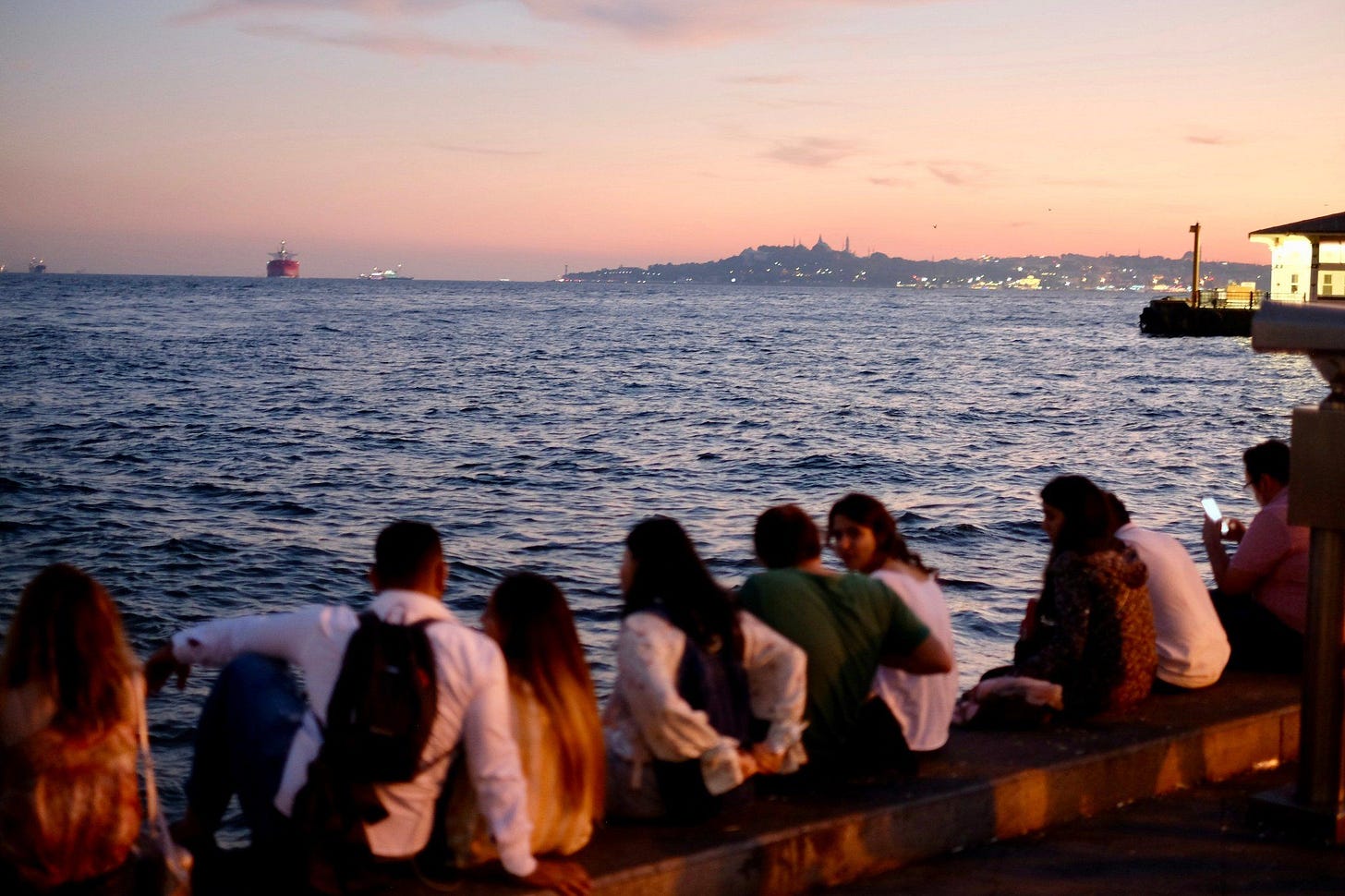To Live in Istanbul and Never See the Sea
Hundreds of thousands (if not more) impoverished people have lived in Istanbul their entire lives without ever seeing the bodies of water that surround it. This tragic phenomenon is not new.

Until a few years ago, the Ramazan Bayramı ( Eid al-Fitr) holiday was prime time to explore Istanbul. Much of the city emptied out as people left en masse to visit their relatives and hometowns, and public transit was free, providing a great excuse to go exploring around town and wander through normally crowded districts that were unusually calm.
Nowadays, this is no longer the case. The crippling economic crisis has prevented a huge segment of Istanbul’s population from going back home during the holiday, and many of these people have opted to take full advantage of the several days of free bus, metro and ferry rides, resulting in millions coming from throughout the city and concentrating in three or four areas. This year, the post-Ramadan crowds were overwhelming, as areas like Beyoğlu, Beşiktas, Eminönü and Karaköy were packed to the gills with locals and tourists alike out and about enjoying the perfect spring weather.
This rapid and intense movement of people from many areas to few challenged the “natural flow” of the city in an alarming way. I put that term in quotations because there is nothing natural about the pace of a massive city of 20 million, but within that chaos and density emerges a sense of order where things often work themselves out and creative solutions are implemented to thwart a variety of problems. That uneasy balance can be stretched to its limit when transit vehicles are overflowing and entire areas become difficult and even nerve-wracking to walk in.
Many complained of the crowds and declared that going out among them was impossible, and these grumbles were often laced with classist and anti-refugee sentiments that conveniently glossed over the underlying problem: poverty has become so widespread in Istanbul that free transit even for a few days is now a luxury and invaluable source of mobility for countless residents in the city.
During these busy days, more fortunate Istanbullites were reminded of a brutal reality: Hundreds of thousands if not millions of people who have lived here for their entire lives have never seen its beautiful seas and/or the Bosphorus. One viral video that emerged during the holiday featured an interview with a 17-year-old from the district of Avcılar who had not once had the opportunity to visit the historic district of Eminönü, which lies at the point where the Bosphorus, the Golden Horn and the Marmara Sea meet and is home to some of Istanbul’s most important historic sites and structures.
In the interview, the youngster was visibly thrilled and excited at having seen this area for the first time in his life, and that being in Eminönü brought him face to face with his own history, a confrontation he had never experienced. His parents glumly acknowledged that they had never been able to take their son there before and if it wasn’t for the free public transit, it wouldn’t have been possible that day either. The father, a construction worker, and his wife brought food from home for themselves while they treated their son to a balık ekmek (grilled fish sandwich), one of Istanbul’s most iconic street foods that is synonymous with Eminönü. They only had enough money for one.
Keep reading with a 7-day free trial
Subscribe to FLANÖR to keep reading this post and get 7 days of free access to the full post archives.




